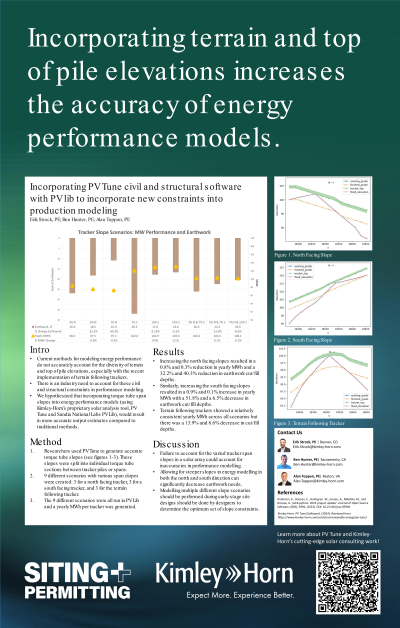Enhancing solar energy production models with PV tune's civil and structural data


Erik Strock, Professional Engineer
Lead Civil Engineer
Kimley-Horn
Greenwood Village, Colorado
Poster Presenter(s)
Current approaches to modeling energy performance fail to accurately account for variations in terrain and pile elevation, which is becoming increasingly relevant due to the increased use of terrain-following trackers. Terrain and torque tube heights have historically been excluded or generalized as inputs into energy production models. Slope and elevation affect energy production; therefore, inaccurate modeling could lead to poor energy estimations. Further, resulting financial models do not accurately take into account energy production and capital expenditures that consider slope & terrain conditions, and racking selection. There is a pressing industry need to integrate these physical constraints into energy and financial models.
A team of civil and electrical solar engineers and researchers theorized that considering and modeling civil and structural elements – variables that influence energy potential during site selection – in PV Tune, a grading and pile analysis tool, prior to input into energy models would increase accuracy in energy modeling.
Using a sample solar site, the team conducted multiple grading and pile height iterations in PV Tune to adjust north-south and east-west slope tolerances, permissible reveal range, and deflection at each pile. These outputs were then used to develop energy performance models in PV Lib. A control was established for comparison using SAM and PVsyst.
Results indicated axis tilt angle (delta 10 degrees south) affected annual generation by 5%. Additionally, comparisons between PVLib and SAM showed a relative difference of 1-4% for expected model generation when incorporating civil and structural elements. Researchers concluded integrated PV Tune and PV Lib calculations significantly increased accuracy in energy performance modeling above and beyond that of the control.
